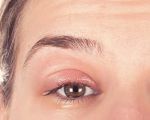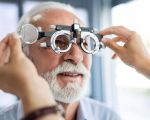
- why-eye-strain-happens-during-work-hours
- 1-simple-exercises-to-reduce-eye-strain-at-work
- 2-creating-an-eye-friendly-workspace
- 3-real-stories-digital-eye-strain-in-the-modern-office
- 4-when-to-seek-expert-help-and-how-eye-docs-can-support-you
Why Eye Strain Happens During Work Hours
Whether you're crunching numbers, drafting proposals, or attending back-to-back Zoom meetings, your eyes are doing more work than you think. Hours of screen exposure—especially under poor lighting and with little to no breaks—can lead to digital eye strain, also known as Computer Vision Syndrome. Common symptoms include dry eyes, blurry vision, headaches, and even neck and shoulder tension. But with the right exercises to reduce eye strain at work, you can protect your vision and feel better throughout the day.
1. Simple Exercises to Reduce Eye Strain at Work
Fortunately, you don't need special equipment or a dark room to give your eyes a much-needed break. These practical exercises can be done right at your desk and take just minutes to complete.
1.1 The 20-20-20 Rule
One of the easiest and most effective methods is the 20-20-20 rule: Every 20 minutes, look at something 20 feet away for at least 20 seconds. This helps reset your eye’s focus and reduces fatigue from staring at close-up screens.
1.2 Palming Technique
Rub your hands together to generate warmth, then gently cup them over your closed eyes without applying pressure. This brief “dark break” gives your optic nerve a few moments to rest while the warmth encourages relaxation.
1.3 Eye Rolling and Focus Shift
Slowly roll your eyes clockwise, then counterclockwise, repeating 2–3 times. Follow this by focusing on a pen held close to your face, then shifting your gaze to an object across the room. Repeat this focus shift several times to train and relax your eye muscles.
1.4 Blink More—Consciously
We blink far less when looking at screens. Make an effort to blink fully every few seconds. This helps moisten your eyes and prevents dryness and irritation caused by prolonged exposure to blue light.
2. Creating an Eye-Friendly Workspace
While exercises are effective, they work best when combined with an ergonomic and visually supportive workspace.
2.1 Screen Positioning and Lighting
Keep your monitor at eye level and about an arm’s length away. Ensure your workspace has soft, natural lighting when possible. Avoid overhead fluorescent lighting, and reduce glare with matte screen filters if needed.
2.2 Font Size and Display Settings
Adjust your screen’s brightness to match your environment and increase text size for comfortable reading. Blue light filters, either built into your device or as screen overlays, can also help reduce strain.
2.3 Use Break Reminders and Apps
Free tools like Eyeleo or Stretchly can prompt you to take microbreaks for your eyes. These apps offer built-in exercises, reminders, and even guided visuals that reinforce healthy habits.
3. Real Stories: Digital Eye Strain in the Modern Office
Jake, a UX designer in Austin, started experiencing frequent headaches and blurry vision by 3 p.m. daily. “I thought I just needed more coffee,” he joked. After seeing an eye specialist, he realized it was screen fatigue. With a combination of daily blinking exercises, a repositioned monitor, and regular eye breaks, his symptoms gradually faded. Now, he shares the 20-20-20 rule with his entire team.
3.1 When a Small Change Makes a Big Difference
Another case involved Maria, a legal assistant who developed eye strain after switching to remote work. Her screen time increased by nearly 40%. After integrating focus-shift drills and using a matte screen filter, she noticed improvements in both vision clarity and concentration levels.
4. When to Seek Expert Help and How Eye Docs Can Support You
While most eye strain symptoms are temporary, persistent issues may signal underlying vision problems like astigmatism or digital eye fatigue syndrome. If you’ve tried exercises and ergonomic adjustments but still struggle, it’s time to consult a professional.
4.1 Professional Screening and Custom Solutions
Eye Docs offers comprehensive eye exams tailored for modern professionals. Whether you're a designer, analyst, gamer, or writer, Eye Docs can evaluate your screen habits, assess eye health, and provide personalized solutions—from blue light glasses to vision therapy programs.
4.2 Build a Long-Term Vision Health Strategy
Eye strain is a signal, not just a symptom. With Eye Docs, you can go beyond temporary fixes and develop long-term vision wellness plans that include regular check-ups, preventative care, and eye-friendly lifestyle recommendations. Your eyes are working hard for you—give them the care they deserve.








